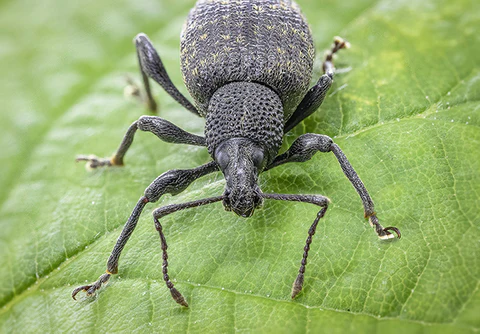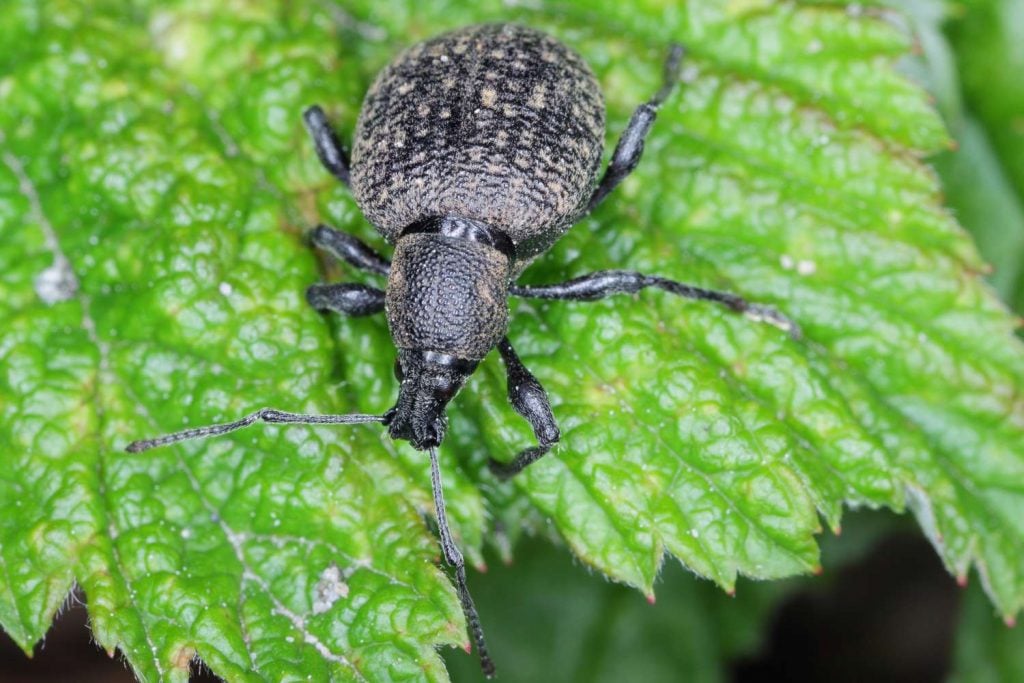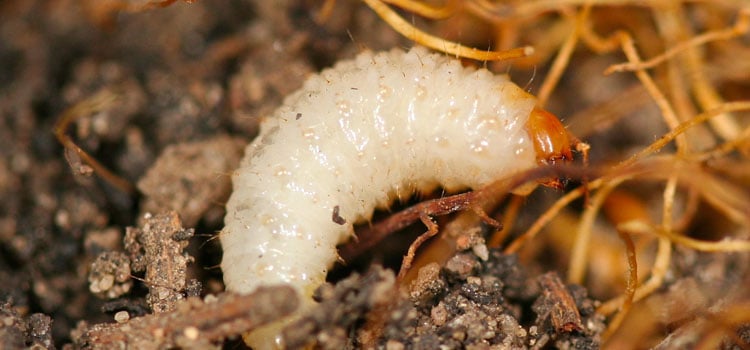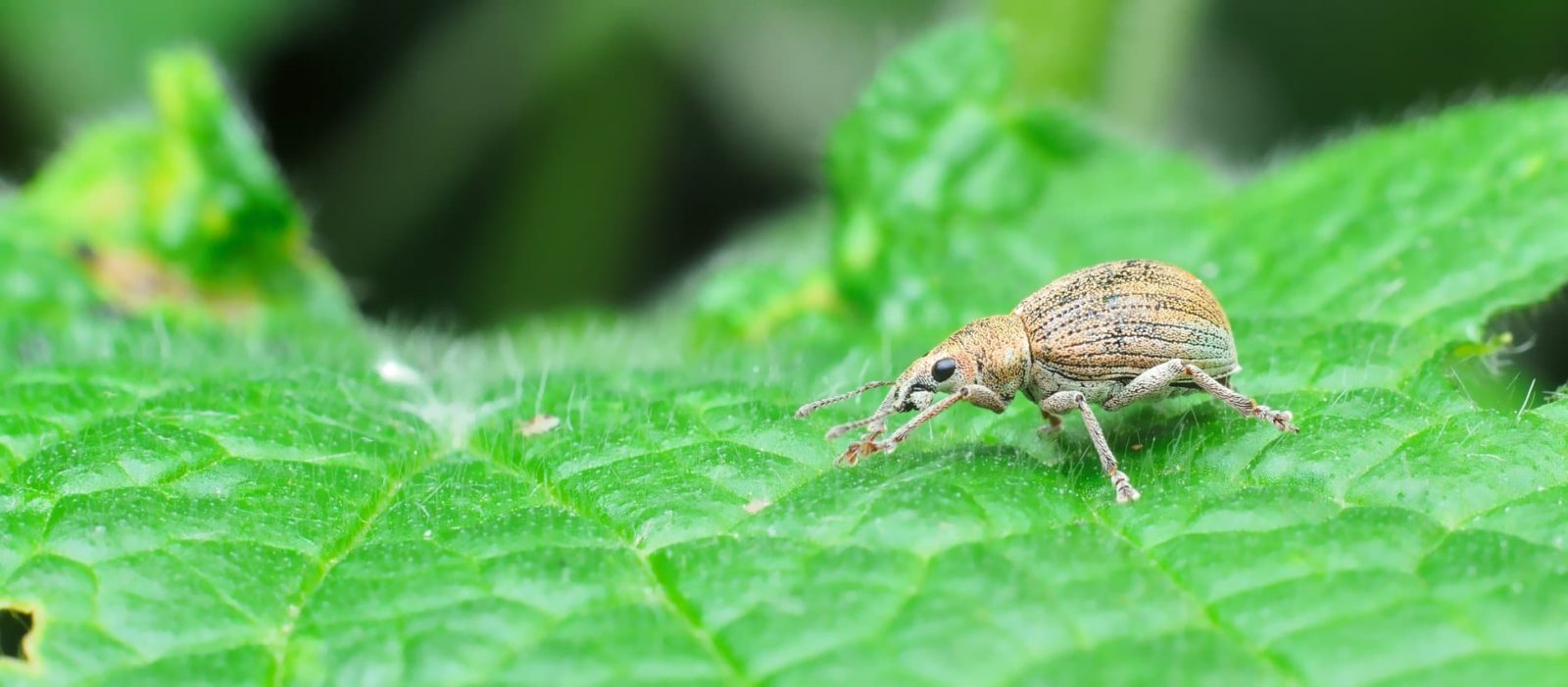Table of Contents
Whether a seasoned gardener or a beginner, this article will help with ideas to control vine weevil infestation and provide you with valuable information on how to identify and treat Vine Weevils.
Vine Weevil, also known as Otiorhynchus Sulcataus, is a plant-eating garden pest. This weevil belongs to the beetle family, which feeds on a wide range of ornamental plants. These are widespread insect that is native to Northern Europe but was seen in North America, and there are more than 500 species in the UK. There are adults and grubs. Adult feeds on leaves, whereas grubs will feed on the roots of the plant. The vine weevil grubs in pots will do unrecoverable damage to the plant if two or three grubs in a pot will kill many plants.
This article will discuss the identification of Vine Weevils and the signs of their infestation. We will also explore different ways to prevent and control them in your garden.
How to Identify Vine Weevils?
The adult Vine Weevil is dull black in colour and has yellow dots on the wings, and the grubs are distinctively small with a white colour body and pale-brown head. Adult Vine Weevils each can lay up to 1,00 eggs in a season. They lay eggs during the late summer. During early autumn, they grow into grubs in the following year.
Mostly they lay eggs on the roots of the plant. Their presence is hardly noticeable until the plant wilt and dies due to lack of sustenance. The adult Vine Weevil will grow up to 1cm long, and the grubs just under 1cm. The Vine Weevil grubs in pots are dangerous to the edible garden.

How to Identify Their Presence?
As we know, Vine Weevil grubs in pots and the adult will cause severe damage to the plants, but the damages are different in this case. The adult will feed on the leaves of the plants, and the grubs will feed on the roots of the plant. If you notice that the leaves are irregular in shape, like the edges of the leaves notched, that is a sign of an adult Vine Weevil. The adults are most active during the dawn, and they will hide under the soil during the day. They are active and found mostly from April to August.

Now speaking about the Vine Weevil grubs in pots, unlike adults, they feed on the roots of the plant, which leads to plant death, and when the plant is pulled out of the soil, you can see the presence of grubs in the soil and no root left. The grubs are found mostly from mid-August till November.

Which Plants Do They Affect?
Vine weevil adults and grubs will infest mostly the container plants and the indoor plants. They also affect a wide range of plants, including ornamental plants and edible plants. In ornamental plants, they feed on Primula, Polyanthus, Fuchsia, Sedum, Heuchera, Hosta, Epimedium, Bergenia, Rhododendron, Evergreen Euonymous, Hydrangea, and young Yews. In edible plants, they feed on Strawberries, Potatoes, Tomatoes, Cabbages, Beetroots, Carrots, Radishes, Spinach, and other green leaves. Vine Weevil grubs in the post are the most dangerous to the edible garden.
Ways to Control Vine Weevil
1. Biological Control
Vine Weevils infest edible plants hence using chemicals to prevent them is not possible. So, we can control these beetles by achieving Balanced Ecosystem in the garden. Include a diverse range of plants which will create a balanced ecosystem in the garden. This means attracting wildlife and welcoming it into the space.
The wildlife that feeds on Vine Weevil, like frogs, shrews, a wide range of birds, ground beetles, and rove beetles. This is one of the most effective ways to control the Vine weevil infestation. While choosing plants for the garden, make sure you choose plants that keep Vine Weevils away from the other plant. Plants that Vine Weevil doesn’t like are mint, lavender, and lemon balm.
2. Hand-Pick the Adult Vine Weevils
Continuously inspect the garden and the plants, and keep checking the plants often so that action can be taken in the early stage. Vine Weevil grubs in pots should be watched carefully because they cannot be handpicked. After dawn, during dark hours, visit your garden with a torch and check for them in the plants in the containers or the greenhouse.
Hand-picking the adult will be one of the best ways to control Vine Weevil. Shake the shrub and check under the pots or the containers. That is where they hide during the daytime. Try removing as many larvae as possible because they are the starting stage of grubs. If the larvae are removed, there will be no next stage of the life cycle.
3. Use Sticky Traps
Place sticky traps around the post or the containers so that the adult Vine Weevil will be trapped and prevented from feeding on the plant. As the temperature changes during the summer and the temperature is in favour of the Vine Weevil to lay eggs, these adults will lay their eggs on the roots of the plants, which later grow into grubs.
Use parcel tape smeared with non-dying insect glue around the pots. If there are no eggs laid on the roots, the infestation is controlled by 90%. Compared to adults, the Vine Weevil grubs in pots cause more damage. There is one important thing to keep in mind this sticky trap will also hold beneficial insects too, so this option should use in extreme cases.
4. Physical Barriers
Install physical barriers like copper strips around the pots or the containers and around the plants in open ground in the greenhouse. There are chances that sometimes, even the plants on the open ground will also be infected by the Vine Weevil.
Place a 2cm grit around the compost surface; this will prevent the adult Vine weevil from laying eggs on the roots. Use wide copper bands around the beds, copper foils around pots, and metals like iron and aluminium also can be used. This will work as the best physical barrier for adult Vine Weevil.
5. Insecticidal soaps
A mixture of water and potassium salt is the Insecticidal soap. It will act as an insecticidal soap spray. This can be sprayed on the indoor, outdoor, and container plants to control the infestation. The soap spray is effective on insects with soft bodies. Soap spray is an old gardening technique that fell out of favour in the course of time, but now they are used in organic gardening.
This soap spray can be prepared at home as it contains only water and potassium salt. By mixing vegetable oil, pure liquid soap, and water, you can safely spray this on the flowerbeds and the vegetable plants in the garden. Use pure castile liquid soap, and this does not contain any fragrance, moisturizer, or other chemicals.
6. Beneficial nematodes
To control larvae and Vine Weevil grubs in pots, you can use microscopic insect nematodes. Many species are available in the UK, like Steinernema kraussei, Heterorhabditis Megidis, H. bacteriophora, and S. feltiae. Introduce the nematodes into the soil to kill the Vine Weevil grubs in the pots and containers. These parasites will not harm any plants, but they will kill the grubs in the soil before they grow large enough to cause serious damage.
Nematodes will best work in light and moist soil and when the temperature is above 5 degrees Celsius in late summer. So, water the soil and keep them moist and spread the nematodes across the garden, and let them do the work. Getting rid of the Vine Weevil in the early stage will be the most effective way since the life cycle of the Vine Weevil is interrupted. Therefore, there will be no further growth.
7. Diatomaceous Earth
Diatomaceous earth is a powder made from fossilized algae. This is a natural and non-toxic substance that can be used as a pesticide to curb infestation and control insects. Diatomaceous earth is sprinkled on the base of the plant and around the pots. When adult Vine Weevil comes in contact with this powder, they will die from their exoskeletons being dried out.
The diatomaceous earth has to ability to suck out moisture and odours, so while using this, do wear a mask and gloves. Avoid inhaling the powder or getting into the skin, as it may cause irritation. This is perfectly safe for humans and animals. However, it causes damage to beneficial insects like bees and butterflies. So, use it in the area where plant-eating harmful insects are present.
8. Neem Oil
Neem oil is a natural insecticide that keeps insects away from plants. This can be directly sprayed onto the plant leaves. Apply a small amount of neem oil to the plant using a spray bottle, and after 24 hours, check the plant again. If the neem oil does not cause any damage, then spray the neem oil completely indoors, outdoors, and in pots. As a control measure, spray neem oil twice a week.
But there are exceptions. The neem oil cannot be used on plants with soft and delicate leave, which may cause foliage burns. It cannot be used on Spinach and other green leafy plants because they have delicate leaves that are prone to Vine Weevil and do not use on newly transplanted plants.
9. Keep the Soil Moist
Vine Weevil grubs in pots and their larvae prefer dry soil, as they are active during the time of summer. Keeping the soil moist will prevent infestation, and water plants regularly around the base to retain moisture. Temperature does play a role in controlling Vine Weevil. Adults will stop feeding when the temperature of the soil is 6-8 degrees Celsius and stop reproducing at 6-7 degrees Celsius.
Therefore, keeping the soil moist and watering regularly is a must to prevent Vine weevil infestation. During summer, the soil gets dried, and it will be a perfect condition for the adults to lay eggs and the larvae to grow.
Chase the Vine Weevil Grubs in Pots
To maintain a healthy and balanced garden, identifying, controlling, and taking preventive measures for Vine Weevils is the most important aspect of protecting the plants. From identifying the presence of Vine Weevil grubs in pots and the adults, noticing the symptoms, using physical barriers, and biological control, this guide has given some tips and methods for everything. Just be cautious when dealing with such insects because they are also the source of many illnesses and, if inhaled, can cause health issues.
But we understand why keeping a check on the garden and regularly monitoring the activity of the plants is the most important part of avoiding future infestations.
By following, these 9 ways to control Vine Weevils, set up a healthy and attractive garden.





